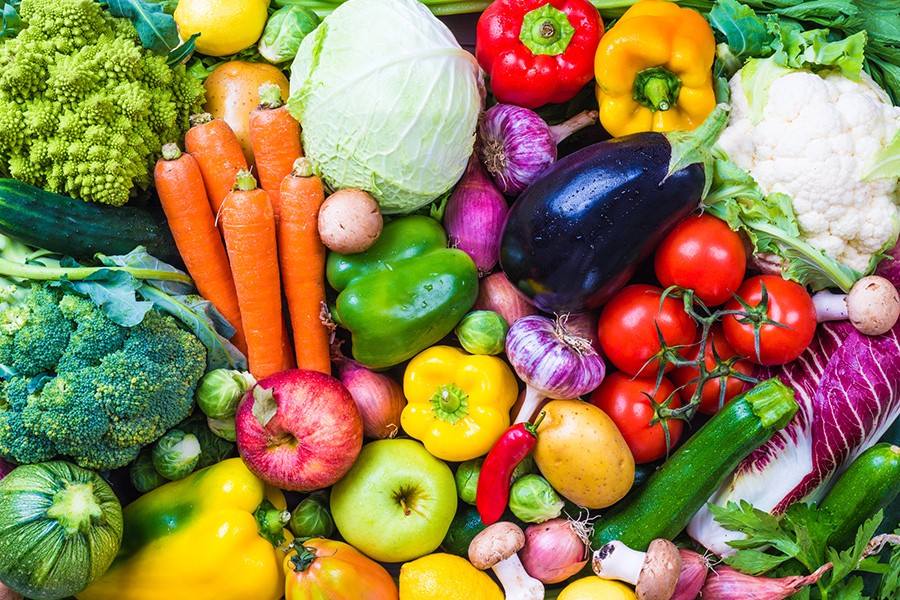Fruits and vegetables are key to a healthy diet. They provide vitamins and minerals, and are low in calories. But most Americans aren't eating enough. Aim for filling half your plate with fruit and veggies—and envision a rainbow. Fruits and vegetables have varied benefits based on their colors, so try to get red, orange, yellow, green, and purple into your diet.
First—Track your intake
You can't increase your fruits and vegetables if you don't know the amount you are eating already. The USDA counts them in cups. Write down how much you are eating each day.
Second—Set a goal
For adults, the USDA recommends a daily intake of 3 cups of vegetables and 2 cups of fruit for men and 2.5 cups of vegetables and 1.5–2 cups of fruit for women. If you aren't already eating that much, try increasing your intake by a half cup each week until you hit the recommendations. Once you have reached your goal, keep going, and increase your variety, too.
Third—Make a change
Here are a few steps you can take to help increase your fruit and vegetable intake:
- Increase your portions. Have a full cup of carrots rather than a half cup.
- Eat fruits and vegetables more often. Instead of eating an apple once a day, have a piece of fruit twice each day.
- Mix fruits and vegetables into other foods. Add fruit to yogurt, cereal, or oatmeal. Pump up pastas, casseroles, and sandwiches with an extra serving of vegetables.
- Add extra flavor. Dip raw vegetables into hummus, low-fat dressings, or peanut butter. Season cooked vegetables with herbs and spices. Roast apples and pears with cinnamon for a tasty dessert. Dip berries and fruit in yogurt and freeze them for a nice treat.
- Keep fruits and vegetables within reach. Make it easy for yourself. Keep prepared fruits and vegetables in the refrigerator. Stock your freezer with frozen fruit and vegetables. Have a fruit bowl at work.
- Vary it up. Try new fruits and veggies often. Spice up salads with red cabbage, jicama, or beets. Try melons, plums, pomegranates, or papayas for a tasty snack.
- Eat within season. Fruits and vegetables are fresher, tastier, and cheaper when they are in season. Early fall is a great time for grapes, pumpkin, squash, broccoli, cauliflower, Brussels sprouts, pineapple, and cranberries.
For more information, go to the website of the Fruits & Veggies—More Matters health initiative and the Department of Agriculture's MyPlate website.
Article provided by Benefits in partnership with CareFirst BlueCross Blue Shield of Maryland.
Posted in Health+Well-Being
Tagged hr newswire








